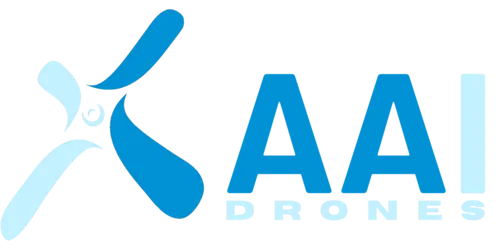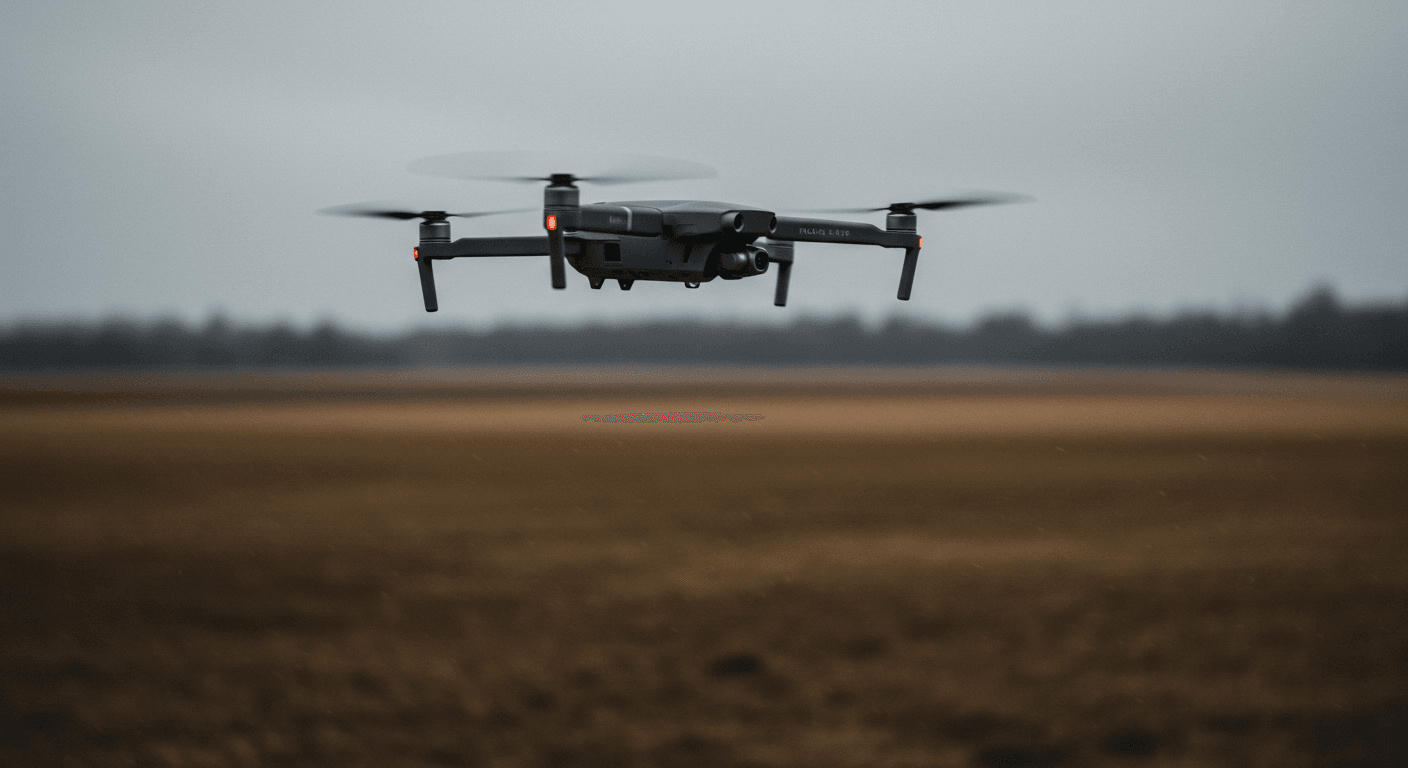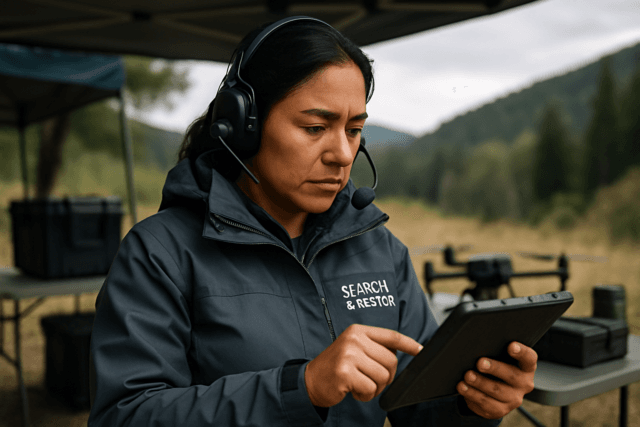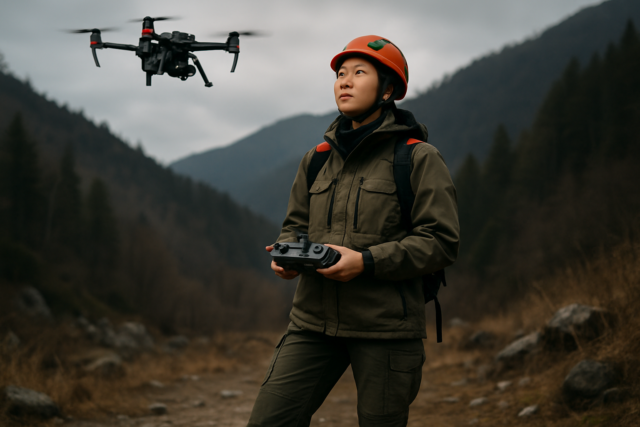Drones have become increasingly popular for both recreational and commercial use, offering stunning aerial views and fresh perspectives. However, like any complex technology, drones are susceptible to software glitches that can impact their performance and even lead to accidents. Understanding these potential issues, how to troubleshoot them, and how to prevent them is crucial for safe and enjoyable drone flights.
Understanding Drone Software Glitches
Drone software glitches can manifest in various ways, affecting different aspects of the drone’s operation. These glitches can range from minor annoyances to critical failures that compromise flight safety. Some common examples include:
- Connection Problems: Difficulty pairing the drone and controller, signal interference, or loss of connection during flight.
- Flight Control Issues: Erratic flight patterns, instability, failure to maintain altitude or position, or unresponsiveness to controls.
- Camera and Gimbal Problems: Camera malfunction, improper exposure, autofocus issues, shaky footage, or gimbal instability.
- Battery and Power Problems: Failure to power on, premature battery drain, or inaccurate battery level readings.
- GPS and Navigation Issues: Loss of GPS signal, inaccurate positioning, or failure to follow waypoints.
- Firmware Update Failures: Issues during the update process, such as the update getting stuck or failing to complete.
- Flyaways: The drone flying away uncontrollably, often due to GPS or compass errors.
Common Causes of Drone Software Glitches
Several factors can contribute to drone software glitches. Some of the most common causes include:
- Outdated Firmware: Using outdated firmware can lead to compatibility issues, performance problems, and security vulnerabilities. Regularly updating your drone’s firmware is essential for maintaining optimal performance and addressing known bugs.
- Software Bugs: Like any software, drone software can contain bugs that cause unexpected behavior. Manufacturers release updates to fix these bugs, so it’s important to stay up-to-date.
- Signal Interference: Wi-Fi networks, power lines, and other electronic devices can disrupt the signal between the drone and controller, leading to connection problems and loss of control.
- GPS Interference: High magnetic interference or geographical factors can impact the drone’s GPS system, reducing its ability to maintain position and navigate accurately.
- Compass Errors: A malfunctioning or uncalibrated compass can lead to flyaways and other navigation problems.
- Battery Issues: Low battery levels, damaged batteries, or using the wrong charger can cause power-related glitches.
- Overheating: Extreme temperatures can affect the drone’s electronics and software, leading to malfunctions.
- Pilot Error: Mistakes made by the pilot, such as flying beyond visual line of sight or in adverse weather conditions, can exacerbate existing software issues or cause new ones.
- Mismatched or Corrupted Data: In drone light shows, mismatched firmware, outdated systems, or software bugs can cause incorrect timing of drone formations, failure to execute planned animations, and sync issues between drones using different operating systems.
- Lack of Preparation: Failing to assess the environment before the show can result in serious complications, such as wind conditions, interference from nearby communication signals, and physical obstacles, which may lead to mid-show failures.
Troubleshooting Drone Software Glitches
When faced with a drone software glitch, following a systematic troubleshooting approach can help identify and resolve the issue. Here are some general steps to take:
Safety First: Before attempting any repairs or troubleshooting steps, ensure your drone is on a level surface, away from people and property. Always prioritize safety and consult your drone’s manual for specific instructions.
Identify the Problem: Determine the specific issue you’re experiencing. Is it a connection problem, a flight control issue, or something else? Understanding the problem is the first step toward finding a solution.
Check the Basics:
- Battery Level: Ensure the drone and controller batteries are sufficiently charged. A low battery can cause erratic flight and crashes.
- Connections: Verify that the drone and controller are properly paired and connected.
- Physical Damage: Inspect the drone for any visible signs of damage, such as broken propellers or loose connections.
Restart Everything: Power cycling the drone, controller, and mobile device can often resolve minor software glitches.
Update Firmware and Software: Check for firmware updates from the drone manufacturer and apply them as needed. These updates often include important enhancements and bug fixes. Also, update the companion app or software on your mobile device to ensure seamless integration and control between your drone and the app.
Calibrate the Drone: Proper calibration is vital for a safe and enjoyable drone flight. Before each flight, ensure that your drone is properly calibrated. Calibration involves adjusting the drone’s internal sensors to maintain stability and accurate flight control.
Check for Interference: Fly in an open area away from potential sources of interference, such as Wi-Fi networks, power lines, and electronic devices.
Consult the Manual: Refer to your drone’s user manual for specific troubleshooting steps and error codes.
Seek Professional Help: If you’re unable to resolve the issue yourself, consider consulting the drone’s manual, seeking professional help, or visiting a certified repair center.
Specific Troubleshooting Tips
- Connection Problems: Ensure the drone and controller are correctly paired and connected before each flight. Check for any interference from nearby electronic devices or power lines that could disrupt the signal. Inspect the antennas on both the drone and the controller for any damage.
- Flight Control Issues: If your drone is not achieving stable flight, inspect the antenna, signal strength, temperature, and battery, which may also impact your drone’s performance. Ensure that all components are correctly calibrated.
- Camera and Gimbal Troubles: Ensure the camera lens is clean and free of debris. Verify that the camera settings are appropriate for your needs, adjusting parameters such as exposure, white balance, and resolution. If the gimbal is not stabilizing properly, refer to the manufacturer’s instructions to recalibrate it.
- Firmware Update Failures: Before an update, please ensure that the device’s battery level (remote controller or aircraft) is higher than 50%. Do not operate the product during an update. Try to use a mobile device with a different operating system for updating. If the update fails several times using the app, please use DJI Assistant 2 installed on a computer for updating.
Preventing Drone Software Glitches
While troubleshooting can help resolve existing glitches, taking preventive measures can significantly reduce the likelihood of encountering them in the first place. Some key preventive measures include:
- Regular Maintenance: Perform regular maintenance checks on your drone, including inspecting propellers, batteries, and connections.
- Pre-Flight Checklist: Always use a pre-flight checklist to ensure that all systems are functioning correctly before takeoff. This should include checking battery levels, connections, calibration, and weather conditions.
- Safe Flying Practices: Fly within visual line of sight, maintain a safe distance from people and property, and be aware of your surroundings to ensure safe flying experiences.
- Avoid Extreme Conditions: Avoid flying in adverse weather conditions, such as strong winds, rain, or extreme temperatures.
- Proper Storage: Store your drone and batteries in a cool, dry place to prevent damage and prolong their lifespan.
- Calibrate Regularly: Calibrate the compass before each flight, especially when flying in a different area.
- Use Supported Devices: Using a supported mobile device and drone can help ensure compatibility and prevent issues.
- Close Unnecessary Apps: Be sure to fully close the DJI Go app by double-clicking the home button to bring up the currently open apps and swiping up on the DJI Go app. Only one app can have access to the drone at a time – having both apps open will mean neither app works.
Advanced Considerations for Drone Light Shows
For drone light shows, where the stakes are even higher due to the complexity and scale of the operation, additional considerations are necessary to prevent software glitches:
- GPS Redundancy: Equip drones with dual-GPS receivers to increase signal redundancy.
- Non-GPS Navigation: Implement LiDAR or optical flow sensors for non-GPS navigation.
- Venue Survey: Survey the venue beforehand to identify potential GPS blind spots and interference sources.
- Software Integration: Keep all drones updated with the latest firmware. Run extensive simulations to detect and correct timing inconsistencies.
- Backup Systems: Use cloud-based control systems for real-time adjustments. Incorporate backup systems or fallback software to take over in case of a primary system failure during the show.
- Full Test Run: Conduct a full-scale rehearsal under real show conditions to identify and resolve any unexpected problems.
- Proper Setup: Before the show, ensure the drones’ settings, such as geofencing and GNSS satellite connectivity, are correctly configured.
Understanding Failsafe Systems
Fail-safe systems are crucial for safe drone operations, acting as a safety net in case of unexpected events or malfunctions. These systems, comprised of both software and hardware components, are designed to maintain the security of operations when things go wrong.
- Flight Controller: The flight controller is the brain of the drone, sending orders to various components to execute the flight. It also collects data from gyroscopes, GPS, battery sensors, and communication links to ensure everything is functioning correctly.
- Fail-Safe Actions: Fail-safe actions are pre-configured responses that the flight controller executes to protect the flight. These actions can include control recovery or flight termination.
- Common Fail-Safe Scenarios:
- Low Battery: The drone will inform the pilot of the battery status and initiate a return-to-takeoff point procedure. If the battery is critically low, it will initiate a landing.
- Loss of Communication Link: The flight interface will alert the pilot if the communication link is degrading. If the link is lost, the drone will automatically execute a link recovery procedure.
- Other Malfunctions: The flight controller can detect malfunctions in engines, flight stabilization, or interference and react accordingly, either by landing, returning to the takeoff point, or informing the pilot.
- EKF Failsafe: The EKF (Extended Kalman Filter) failsafe monitors the health of the drone’s position and attitude estimation system to catch problems with the position estimate (often caused by GPS glitches or compass errors) and prevent flyaways.
Flyaways: Prevention and Recovery
A “flyaway” is a situation where a drone flies away uncontrollably, often due to a loss of GPS signal or compass error. Here’s how to prevent and handle flyaways:
- Prevention:
- Calibrate the compass before each flight, especially in new locations.
- Avoid flying near high-tension power lines, cellphone antennas, and microwave antennas.
- Ensure a strong GPS signal before takeoff.
- Set a home point before takeoff.
- Recovery:
- Activate the “Return to Home” (RTH) function if the drone loses signal.
- Use the “Find My Drone” feature in the DJI Fly app to locate the drone.
- If the drone is lost in a dangerous environment, prioritize safety.
The Importance of Firmware Updates
Regularly updating your drone’s firmware is essential for several reasons:
- Bug Fixes: Firmware updates often include fixes for known software bugs that can cause glitches or malfunctions.
- Performance Improvements: Updates can improve the drone’s flight performance, stability, and responsiveness.
- New Features: Manufacturers often add new features and capabilities through firmware updates.
- Compatibility: Updating firmware ensures compatibility with the latest mobile devices and software.
- Security: Firmware updates can address security vulnerabilities that could be exploited by hackers.
Drones and Data Processing
Software glitches can also affect drone data processing, particularly in photogrammetry applications. Some common issues include:
- Uncalibrated Images: Poor image overlap or homogenous subject matter can result in uncalibrated images.
- Vertical Alignment Issues: Inaccurate altitude information from the drone can cause vertical alignment problems.
- Poor Reconstruction of Water Bodies: Water’s reflective nature can make it difficult to derive feature points, leading to artifacts in orthomosaics.
Conclusion
Drone software glitches are a reality, but by understanding the potential causes, implementing preventive measures, and knowing how to troubleshoot common issues, drone pilots can minimize the risk of encountering problems and ensure safe and enjoyable flights. Regular maintenance, pre-flight checks, and staying up-to-date with firmware updates are essential for keeping your drone in top condition and preventing software-related mishaps.





